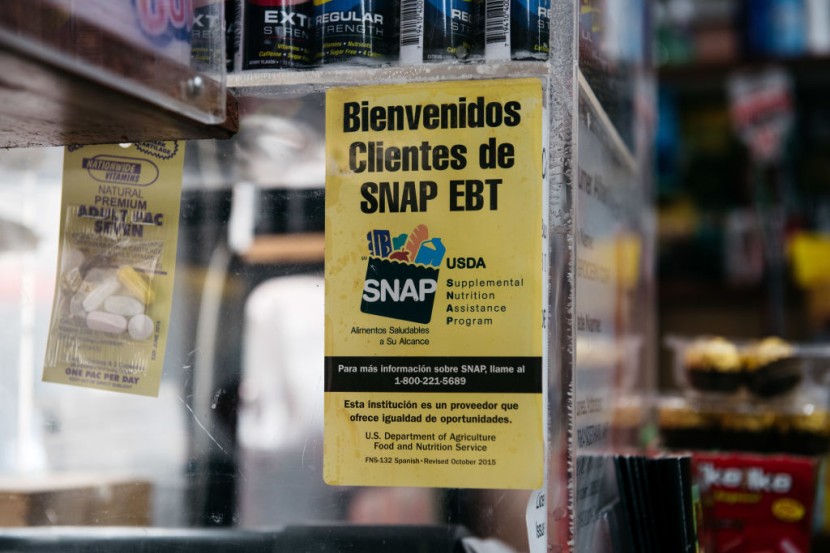
In 2023, the farm bill, a component of federal legislation that governs how the American government spends money on food, will need to be reauthorized.
Some supplemental nutrition programs, such as the Special Supplemental Nutrition Program for Women, Infants (WIC) and SNAP, may have their budgets slashed depending on the outcome of the midterm elections.
Midterm Election Results Matter in SNAP Benefits Payment
Nutrition programs like the Supplemental Nutrition Assistance Program have the agriculture bill's highest budget (SNAP). Previously known as the food stamp program, SNAP benefits helps lower-income households make up the difference in their food budgets.
Expansions to the SNAP program, particularly at the peak of the pandemic, were crucial, say experts like Karen Dolan, Director of the Criminalization of Poverty Project at the Institute for Policy Studies, in keeping roughly 8 million people out of poverty. Per GoBankingRates, nearly half of them had children to support.
However, if Republicans take over both the House and the Senate or if Congress is divided, they may reduce the scope of the supplemental feeding programs by making access more difficult by enforcing stringent job requirements, according to experts like Dolan.
Democrats may have more power to advance anti-hunger ideas in the agricultural bill if they control both the House and the Senate.
Millions of Americans would be impacted by a reduction in SNAP funding. According to the most recent Department of Agriculture data, close to $96 billion in food stamps were distributed to more than 41 million recipients for the 2022 fiscal year.
Everything is becoming more costly, particularly food, and consumers are bearing the brunt of these rising prices. The food-at-home index, or grocery costs, increased 12.4% over the prior year as of October 2022, according to the most current Consumer Price Index data from the federal government.
The maximum SNAP benefit for a household of four is only around 6.8% more in fiscal 2022 than it was in fiscal 2021, which is insufficient to keep up with the current rate of food inflation. Due to the growing cost of food in 2022, millions of Americans who rely on SNAP benefits to make food purchases will find it challenging to do so, according to Marca.
But with the fiscal year 2023, recipients will get a 12.5 percent cost-of-living adjustment (COLA), with SNAP payments increasing yearly to account for inflation. Beginning on October 1, 2022, and ending on September 30, 2023, is the COLA.
The cost of food purchased for consumption at home increased by 13% in September 2022 compared to September 2021, according to the Bureau of Labor Statistics. Monthly rises in food costs have exceeded the pace of general inflation in at least six of the last seven months.
In 2023, the amount of food stamps available to eligible one-person families will increase from $250 to $281. Households with two people will receive $516 instead of $459, and those with three people will receive $740, which is over $90 more than what they earned last year ($658).
Read Also : Stimulus Checks for Immigrants: How To Claim Your Payment Worth $1,000 in November 2022?
SNAP Benefits 2023
Your EBT cards can be used to buy a variety of food items, including seeds and plants that grow food, as well as fruits, vegetables, meat, poultry, fish, dairy products, breads, cereals, snack foods, and non-alcoholic drinks.
This year, rising living expenses have had an effect on almost every American household, with lower-income families being the most severely affected. SNAP payments are modified at the beginning of each fiscal year (the first of October) to reflect changes in living expenses, as per Nasdaq.
For instance, in October, SNAP payments jumped by 12.5%. A family of four is now eligible for a maximum benefit of $939. The issue is that the system isn't designed to handle double-digit price hikes over the course of a single year. In periods of strong inflation, annual adjustments are only so effective.
The money, whether it be in the form of SNAP benefits or cash in the bank, doesn't purchase as much over time. By September 2023, food costs might increase by another 10% or more if inflation keeps increasing at its present rate. Hope this doesn't come to pass. But as each month goes on, people will receive less food for the same amount of benefits unless the system is changed or inflation slows down.
Related Article: Extra Social Security Payments: Who Could Receive Up to $841 Boosted Check in December?
@YouTube
© 2025 HNGN, All rights reserved. Do not reproduce without permission.








